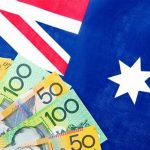EURUSD Slides as US Dollar Recovers on Hopes of US-EU Trade Breakthrough
The EURUSD pair came under renewed pressure during the European session on Tuesday, correcting sharply to near 1.1350 after touching a monthly high of 1.1425 just a day earlier. The retreat driven by broad-based US Dollar strength as signs of progress in trade talks between the United States and the European Union boosted market sentiment around the Greenback. Meanwhile, soft inflation data from France reinforced expectations of a June interest rate cut by the European Central Bank (ECB), further weighing on the Euro.
US Dollar Rebounds on Transatlantic Trade Optimism
The key catalyst driving the recovery in the US Dollar was a series of developments suggesting accelerated momentum toward a bilateral trade agreement between Washington and Brussels. The US Dollar Index (DXY), which tracks the Greenback against a basket of six major currencies, rose by 0.4% to trade around 99.35, reversing earlier losses from last week.
According to Reuters, EU officials have requested domestic companies to submit their US investment plans, signaling a serious push from Brussels to lay the groundwork for a comprehensive trade framework. This move interpreted by financial markets as a signal that both sides are committed to overcoming recent trade tensions.
Further optimism came from European Trade Commissioner Maros Sefcovic, who posted on X (formerly Twitter) that the European Commission “remains fully committed to constructive efforts at pace toward an EU-US deal” and is in “constant contact” with US trade officials. His comments eased fears of an imminent trade standoff that had emerged following threats of high tariffs.
Trump Postpones EU Tariffs, Temporarily Reducing Trade Tensions
The US Dollar’s sell-off late last week initially triggered by a surprise announcement from President Donald Trump, who proposed imposing 50% tariffs on EU imports effective June 1. The proposal spooked markets and caused a sharp dip in the USD as investors feared a renewed escalation in global trade tensions.
However, over the weekend, Trump confirmed he would delay the tariff decision to July 9 following what he called a “good phone call” with European Commission President Ursula von der Leyen. According to sources familiar with the matter, von der Leyen pledged to accelerate EU trade negotiations, buying time for both sides to find common ground and potentially finalize an agreement.
This shift in rhetoric has led market participants to reassess the US Dollar’s near-term trajectory, as easing tensions reduce downside risks for the Greenback.
French Inflation Cools in May, Increasing ECB Easing Bets
In parallel, the Euro faced pressure from the release of weaker-than-expected inflation data out of France, the Eurozone’s second-largest economy. According to the preliminary May Consumer Price Index (CPI) report based on EU harmonized methodology, monthly inflation declined by 0.2%, a sharp contrast to April’s 0.7% rise. On an annual basis, inflation slowed to 0.6% from 0.9%.
The data indicates that disinflationary forces are gaining traction in the Eurozone, reinforcing expectations that the ECB is on track to deliver its first rate cut since 2019 during its June 6 meeting. The numbers also align with recent trends seen in other core Eurozone economies, suggesting a broader shift in inflation dynamics.
ECB Officials Signal Divergence on Policy Path
Following the inflation release, ECB policymaker and French central bank head François Villeroy de Galhau commented that the latest CPI figures were a “very encouraging sign of disinflation in action.” He reiterated that the ECB must remain cautious but open to normalizing policy further to support the region’s weak demand outlook. His comments were interpreted as dovish by the markets.
Lithuanian central bank governor and ECB Governing Council member Gediminas Šimkus also voiced concern about inflation undershooting the ECB’s 2% target. He cited the recent strength in the Euro and lingering uncertainty over global trade as downside risks, suggesting that conditions warrant an interest rate cut at the June meeting.
However, not all ECB officials are in favor of imminent policy easing. Robert Holzmann, Austrian central bank governor and known policy hawk, warned in an interview with the Financial Times that further rate cuts in June or July would be “more risky than staying where we are.” He added that additional data expected by September would allow the ECB to make a better-informed decision, signaling his preference for a longer pause.
Despite these differences, money markets have fully priced in a 25 basis point rate cut to bring the Deposit Facility Rate down from 2.25% to 2.00% at next week’s policy meeting.
Inflation Reports from Germany, Spain, and Italy in Focus
With the ECB policy meeting fast approaching, traders are closely watching preliminary inflation data scheduled for release later this week from major Eurozone economies including Germany, Spain, and Italy. Germany’s state-level CPI reports will be publish on Friday, followed by the national inflation numbers later that day.
Spain and Italy are also set to release their May CPI figures, which will give a more comprehensive view of regional price dynamics. The flash estimate for the entire Eurozone will be release on June 3 and expected to play a decisive role in shaping the ECB’s final decision.
Should the data confirm a broader decline in inflation across the currency bloc, markets could begin pricing in the possibility of consecutive rate cuts in the second half of 2025.
Market Repricing and EURUSD Technical Setup
The recent turn in sentiment has caused EURUSD bulls to lose momentum after failing to sustain above the psychological 1.1400 level. The pair now trades near 1.1350 and faces immediate support at 1.1320, followed by 1.1280. On the upside, EURUSD key resistance lies at the 1.1400 handle, which would need to be broken convincingly for bullish continuation.
EURUSD Technical indicators also suggest fading bullish momentum. The Relative Strength Index (RSI) on the daily chart has started to retreat from overbought territory, while price action shows signs of forming a short-term top.
The Euro’s performance in the coming sessions will depend heavily on inflation prints and commentary from ECB officials, while the Dollar’s path will be guided by the tone of trade negotiations and any fresh headlines from Washington.
US Data Calendar Light, Political Developments in Focus
From the US side, the economic calendar remains relatively light this week, with durable goods orders and consumer confidence reports offering limited directional cues. Market participants instead focused on political developments, especially surrounding trade and fiscal negotiations.
Any signs of renewed tensions between the US and its trade partners—or fresh stimulus measures—could inject volatility into the Greenback. With Trump’s tariffs delayed until July, markets have a short window to assess whether trade diplomacy yields tangible outcomes.
Conclusion
EURUSD is under renewed pressure as the US Dollar finds support from a more constructive tone in US-EU trade talks and easing trade tensions. Meanwhile, soft inflation data from France bolsters expectations of a June ECB rate cut, creating downward pressure on the Euro. As policymakers remain divided, and market expectations fully aligned with a 25 bps cut next week, the focus now shifts to key inflation data from Germany, Spain, Italy, and the Eurozone. These indicators will be pivotal in determining whether the ECB adopts a cautious stance or signals a potential easing cycle ahead.
[faq-schema id=”39688″]









